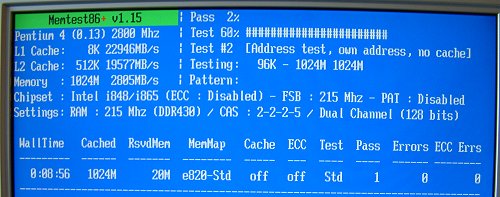3D benchmarks, overclocking
Tight latencies often bring about decent gains in gaming benchmarks.
That's the case here. Running tighter latencies and more system memory can yield an extra 650 marks. 22323 is our highest default score obtained using a Radeon 9800 XT graphics card. It just goes to reiterate the usefulness of low-latency memory.

More evidence to support Corsair's claims that this is the system RAM to buy if you're interested in superlative default performance.

There's never been much of a performance delta between the two low-latency sets. 3200XLPRO is most useful when you're squeezing the very last bit of performance from a system.
Overclocking

We managed a steady 215MHz (DDR430) at 2.8v before Memtest86 failure. 220MHz produced the odd error in both Memtest86 and when the PC was placed under OS load. It's, then, clear that Corsair's single most-important priority was tweaking the Samsung chips for ultra-low latencies at near-DDR400 speeds. Relaxing the latencies resulted in a top speed of 247MHz (DDR494), so it's not particularly suited for fans of high FSBs and synchronous RAM settings.









